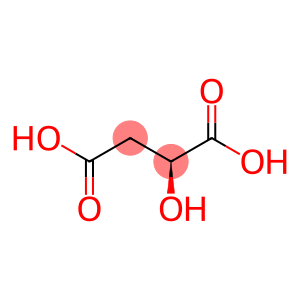L-Malic acid (CAS 97-67-6) is a naturally occurring organic compound widely recognized for its tart taste and versatile applications across various industries. This article explores its chemical properties, production methods, and key uses, highlighting its importance in both food and pharmaceutical contexts.
Chemical Properties
L-Malic acid is a white crystalline powder with a tart, acidic taste and is nearly odorless. It is a natural constituent of apples and many other fruits and plants. Its chemical formula is C₄H₆O₅, with a molecular weight of approximately 134.09 g/mol. L-Malic acid is highly soluble in water and has a melting point of 101-103°C.
Property Value
Molecular Formula C₄H₆O₅
Molecular Weight 134.09 g/mol
Appearance White crystalline powder
Solubility in Water Highly soluble
Melting Point 101-103°C
Production Methods
L-Malic acid can be produced through several methods, including chemical synthesis and enzymatic processes. The chemical method involves the hydration of maleic acid, while the enzymatic process uses microorganisms like Saccharomyces cerevisiae to catalyze the conversion of fumaric acid to L-Malic acid. Enzymatic synthesis is preferred for producing enantiopure L-Malic acid, which is essential for pharmaceutical applications.
Method Process Description
Chemical Synthesis Hydration of maleic acid
Enzymatic Process Fumaric acid converted to L-Malic acid using microorganisms
Applications
L-Malic acid is widely used in the food industry as an acidulant, flavoring agent, and pH control agent. It is also used in pharmaceuticals as a chelating agent and as an intermediate in chemical synthesis. Additionally, L-Malic acid has potential health benefits, including its role in energy metabolism and antimicrobial properties.
Industry Application
Food Industry Flavoring agent, acidulant, pH control agent
Pharmaceuticals Chelating agent, chemical intermediate
Health Energy metabolism, antimicrobial properties
Health Benefits
L-Malic acid is involved in cellular metabolism and is a key intermediate in the tricarboxylic acid cycle. It has been studied for its potential to enhance physical performance and alleviate symptoms associated with fibromyalgia. Additionally, L-Malic acid shows antimicrobial properties that contribute to food preservation by inhibiting microbial growth.
In conclusion, L-Malic acid is a versatile compound with a wide range of applications in food, pharmaceuticals, and health. Its natural occurrence and multiple benefits make it an essential component in various industrial and health-related contexts.

